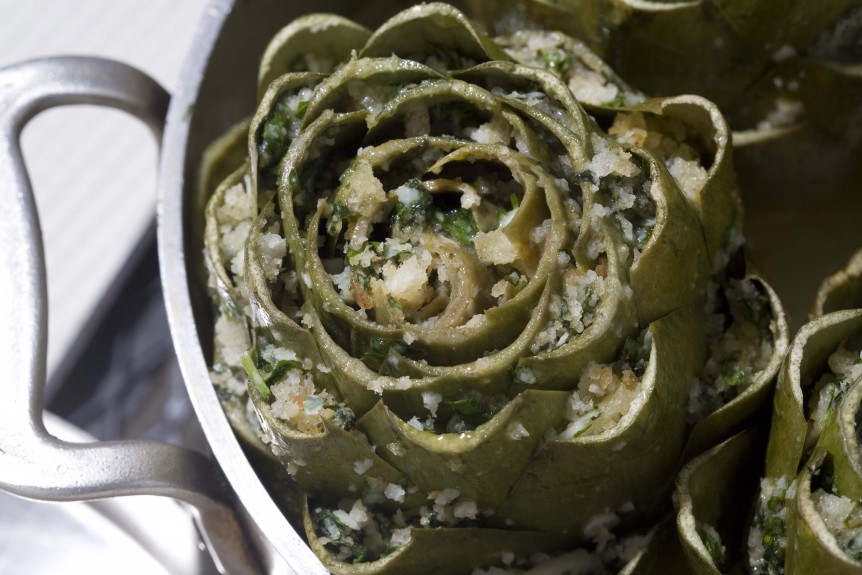by Hannah Howard
Spring brings a sense of relief. Finally, lingering sunshine, things inside and outside thawing, blossoming, reawakening.
Springtime means artichoke season is upon us. Last year, I visited Rome for the first time. It was everything I’d hoped it would be—the Trevi Fountain, the Coliseum, the rambling streets of the Trastevere, and dozens of cups of perfect espresso—“black as the devil…/sweet as love”— left me full of awe and nearly giggly with joy.
I feasted on gelato, pasta, salumi…and every time I could get my hands on them, artichokes, carciofi. They were in season, and so I ate them often, every day of my visit, and still wanted more whenever I had emptied my plate, wiped it clean with a nob of crusty bread. The artichoke has been cultivated in Italy since antiquity, but its novelty has not worn off. Romans love their artichokes, and so do I.
In 16th century Europe, artichokes were reputed to be aphrodisiacs. Wild. Some say so still, but these days, you won’t scandalize anyone by chowing down on these luscious springtime vegetables—although you may woo the lucky artichoke eater with their supreme delectability. Artichokes entice with a subtle, earthy, and wondrous flavor that shines when they’re generously dressed with a sprinkle of good salt and a drizzle of high quality olive oil. They taste of spring, and of promise.
Of course, spiny, tough, and thistly ‘chokes can intimidate even a confident cook. Kornfeld and Massimilla explain that denizens of this hemisphere would have nothing to do with them until about a hundred years ago, when Italian immigrants showed us how to get past their thorny reputation. Treat an artichoke right—it’s a bit simpler than you imagine, promise!—and you will be rewarded with a succulent delicacy. Sure it’s work, but it’s worth the effort. Artichokes are chock full of fiber, potassium, and vitamin C. Choosing globes that are dark green, heavy, and have tightly packed leaves will yield the best results for your meal.
Tonight, after savoring the exciting poem “How to Eat the Artichoke” on page 290 of Cooking with the Muse, I’m planning to make Artichokes alla Romana (as explained on pages 287-289) to welcome these fantastically warm days. These artichokes are braised in stock with lemon and olive oil, then stuffed with a savory mix of garlic, basil, parsley, breadcrumbs and Parmesan, and finished with melted butter. I’m anticipating the result: “great green flowers of finger-tingling pleasure that drive hungry eaters to the hot oiled hearts of oblivion.” I don’t imagine that there will be any leftovers.
